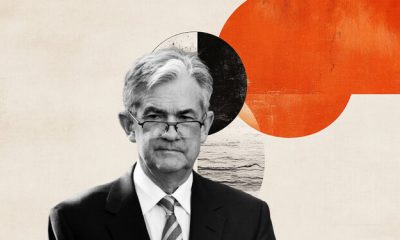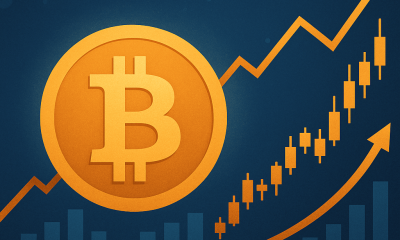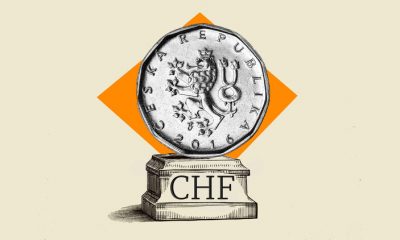

others
Pound Sterling gets stuck in a limited range ahead of Fed-BoE monetary policy – Crypto News
- Pound Sterling trades sideways ahead of US, UK central banks’ policy decisions.
- The BoE and the Fed are expected to keep interest rates steady.
- BoE policymakers are expected to offer hawkish guidance amid higher inflation.
The Pound Sterling (GBP) remains lackluster in Monday’s European session as investors appear to have sidelined ahead of the interest rate announcements by the Bank of England (BoE) and the Federal Reserve (Fed). The GBP/USD pair trades in a narrow range near 1.2700 as investors are anticipated to make their bets after this week’s policy announcements.
Trades see the BoE maintaining interest rates unchanged at 5.25% for the fourth time in a row as core inflation in the United Kingdom more than doubles the desired rate of 2%. Market participants will keenly focus on the interest rate outlook provided by the central bank.
The first interest rate decision of 2024 is expected to be challenging for BoE policymakers as inflation has proven to be more stubborn than expected and a technical recession is increasingly likely. Consumer spending has been hit hard due to the deepening cost-of-living crisis. Chances of a recession would escalate if the BoE delivers a hawkish guidance.
Daily digest market movers: Pound Sterling trades sideways while US Dollar advances
- The Pound Sterling is stuck in a tight range around 1.2700 as investors shift their focus towards the monetary policy announcements by the Federal Reserve and the Bank of England, which are due this week.
- The BoE is widely anticipated to keep interest rates unchanged amid persistent price pressures.
- Interest rates are expected to remain steady at 5.25% for the fourth time in a row. Investors will keenly focus on the guidance on interest rates.
- Unlike the Fed and the European Central Bank (ECB), BoE policymakers have not talked about the timing or scope of rate cuts yet.
- Underlying inflation in the United Kingdom is higher than in the rest of the Group of Seven economies. This will likely allow BoE policymakers to deliver hawkish guidance on the interest rate outlook.
- Discussions among BoE officials will likely remain supportive of keeping interest rates restrictive until policymakers get confident that inflation will return to the 2% target in a sustainable manner.
- BoE policymakers have said rate cuts at the current stage would be “premature” as they could lead to a rebound in price pressures.
- Meanwhile, the US Dollar Index (DXY) strengthens ahead of the Fed’s monetary policy decision and key data such as employment and Manufacturing PMI for January.
- Investors see the Fed maintaining the status-quo for a fourth straight time. The entire focus will be on the timing of when the Fed will start reducing interest rates.
- Fed officials projected a reduction in interest rates by 75 basis points (bps) in 2024. Market participants will focus on how the Fed will fit these three expected rate cuts from or after the March monetary policy meeting.
- Before the Fed’s policy decision, market participants will focus on the JOLTS Job Openings data for December. US employers are expected to have offered 8.75 million jobs in December, slightly lower from the 8.79 million job postings recorded in November.
Technical Analysis: Pound Sterling holds auction above 1.2700
Pound Sterling trades back and forth near 1.2700 ahead of the key monetary policy announcements on both sides of the Atlantic. The GBP/USD pair oscillates inside Friday’s trading range of 1.2675-1.2758, indicating a sharp contraction in volatility. On a daily timeframe, the Cable demonstrates a long inventory adjustment between retail participants and institutional investors. The 20-day Exponential Moving Average (EMA) near 1.2700 overlaps the Cable’s current trading range, adding to evidence that investors have sidelined ahead of the data-packed week.
BoE FAQs
The Bank of England (BoE) decides monetary policy for the United Kingdom. Its primary goal is to achieve ‘price stability’, or a steady inflation rate of 2%. Its tool for achieving this is via the adjustment of base lending rates. The BoE sets the rate at which it lends to commercial banks and banks lend to each other, determining the level of interest rates in the economy overall. This also impacts the value of the Pound Sterling (GBP).
When inflation is above the Bank of England’s target it responds by raising interest rates, making it more expensive for people and businesses to access credit. This is positive for the Pound Sterling because higher interest rates make the UK a more attractive place for global investors to park their money. When inflation falls below target, it is a sign economic growth is slowing, and the BoE will consider lowering interest rates to cheapen credit in the hope businesses will borrow to invest in growth-generating projects – a negative for the Pound Sterling.
In extreme situations, the Bank of England can enact a policy called Quantitative Easing (QE). QE is the process by which the BoE substantially increases the flow of credit in a stuck financial system. QE is a last resort policy when lowering interest rates will not achieve the necessary result. The process of QE involves the BoE printing money to buy assets – usually government or AAA-rated corporate bonds – from banks and other financial institutions. QE usually results in a weaker Pound Sterling.
Quantitative tightening (QT) is the reverse of QE, enacted when the economy is strengthening and inflation starts rising. Whilst in QE the Bank of England (BoE) purchases government and corporate bonds from financial institutions to encourage them to lend; in QT, the BoE stops buying more bonds, and stops reinvesting the principal maturing on the bonds it already holds. It is usually positive for the Pound Sterling.
-

 Cryptocurrency1 week ago
Cryptocurrency1 week agoWhale Sells $407K TRUMP, Loses $1.37M in Exit – Crypto News
-

 Blockchain1 week ago
Blockchain1 week agoRobinhood Dealing With Fallout of Tokenized Equities Offering – Crypto News
-

 Cryptocurrency1 week ago
Cryptocurrency1 week agoSatoshi-Era Bitcoin Whale Moves Another $2.42 Billion, What’s Happening? – Crypto News
-
Technology5 days ago
Fed Rate Cut Odds Surge As Powell’s Future Hangs In The Balance – Crypto News
-

 Cryptocurrency1 week ago
Cryptocurrency1 week agoBitcoin Breaches $120K, Institutional FOMO Takes and House Debate Propel Gains – Crypto News
-

 Blockchain6 days ago
Blockchain6 days agoRipple and Ctrl Alt Team to Support Real Estate Tokenization – Crypto News
-
Cryptocurrency1 week ago
Why Is Bitcoin Up Today? – Crypto News
-

 Cryptocurrency1 week ago
Cryptocurrency1 week agoStrategy Resumes Bitcoin Buys, Boosting Holdings to Over $72 Billion in BTC – Crypto News
-

 others5 days ago
others5 days agoEUR/USD recovers with trade talks and Fed independence in focus – Crypto News
-
Business5 days ago
XRP Lawsuit Update: Ripple Paid $125M in Cash, Settlement Hinges on Appeal – Crypto News
-
Business4 days ago
XLM Is More Bullish Than ETH, SOL, And XRP, Peter Brandt Declares – Crypto News
-
Technology1 week ago
Hyperliquid Hits Record $10.6B OI As HYPE Price Records New ATH – Crypto News
-

 Blockchain1 week ago
Blockchain1 week agoZiglu Faces $2.7M Shortfall as Crypto Fintech Enters Special Administration – Crypto News
-

 Cryptocurrency1 week ago
Cryptocurrency1 week agoCardano’s $1.22 target: Why traders should be aware of THIS ADA setup – Crypto News
-

 Metaverse6 days ago
Metaverse6 days agoWhy voice is emerging as India’s next frontier for AI interaction – Crypto News
-

 Metaverse6 days ago
Metaverse6 days agoNvidia’s Jensen Huang says AI ‘fundamental like electricity’, praises Chinese models as ‘catalyst for global progress’ – Crypto News
-
Technology5 days ago
Fed Rate Cut Odds Surge As Powell’s Future Hangs In The Balance – Crypto News
-

 Cryptocurrency5 days ago
Cryptocurrency5 days agoBitcoin trades near $119K after new all-time high; Coinbase rebrands wallet to ‘Base App’ – Crypto News
-
Cryptocurrency1 week ago
XRP, Solana and ADA Rally, Is Altcoin Season Back This July 2025? – Crypto News
-
![Stellar [XLM] bulls exhausted after rally - Is a pullback nearby?](https://dripp.zone/news/wp-content/uploads/2025/07/Stellar-XLM-bulls-exhausted-after-rally-Is-a-pullback.webp-400x240.webp)
![Stellar [XLM] bulls exhausted after rally - Is a pullback nearby?](https://dripp.zone/news/wp-content/uploads/2025/07/Stellar-XLM-bulls-exhausted-after-rally-Is-a-pullback.webp-80x80.webp) Cryptocurrency1 week ago
Cryptocurrency1 week agoStellar [XLM] bulls exhausted after rally – Is a pullback nearby? – Crypto News
-
Business7 days ago
Pepe Coin Rich List June 2025: Who’s Holding Highest PEPE as it Nears Half a Million Holders? – Crypto News
-

 Cryptocurrency7 days ago
Cryptocurrency7 days agoIt’s a Statement, Says Bitfinex Alpha – Crypto News
-

 Cryptocurrency6 days ago
Cryptocurrency6 days ago1inch price forecast: 1INCH hits 7-month high after double digit gains – Crypto News
-

 Cryptocurrency6 days ago
Cryptocurrency6 days ago1inch price forecast: 1INCH hits 7-month high after double digit gains – Crypto News
-

 others5 days ago
others5 days agoTop Crypto Exchange by Trading Volume Binance Announces Airdrop for New Ethereum (ETH) Ecosystem Altcoin – Crypto News
-

 De-fi5 days ago
De-fi5 days agoU.S. Marshals Peg Federal Bitcoin Holdings at 28,988 Tokens Worth $3.4 B – Crypto News
-

 others5 days ago
others5 days agoGBP/USD rallies on US PPI dip and Trump’s potential Powell removal – Crypto News
-

 others5 days ago
others5 days agoGBP/USD rallies on US PPI dip and Trump’s potential Powell removal – Crypto News
-
Cryptocurrency5 days ago
Russia’s $85 Billion Sberbank to Launch Crypto Custody Services – Crypto News
-

 Blockchain4 days ago
Blockchain4 days agoNasdaq Exchange Files SEC Form to List Staking Ethereum ETF – Crypto News
-

 others1 week ago
others1 week agoGold rises as USD aversion and tariff tensions boost safe-haven demand – Crypto News
-
Business1 week ago
Next Week To Make US The “Crypto Capital”, Says Bo Hines – Crypto News
-

 Cryptocurrency1 week ago
Cryptocurrency1 week agoBitcoin and Ethereum ETFs record $3.6B inflows this week – Crypto News
-
Technology1 week ago
Peter Schiff Reignites Bitcoin Criticism, Calls 21M Supply Arbitrary – Crypto News
-

 Technology1 week ago
Technology1 week agoAmazon Prime Day Sale 2025: Best earphones and headphone deals with up to 70% off – Crypto News
-

 others1 week ago
others1 week agoJPMorgan Chase CEO Says Traders May Be Seriously Mistaken on Fed Rate Cuts: Report – Crypto News
-

 Cryptocurrency1 week ago
Cryptocurrency1 week agoFriday charts: The rise of zero-sum thinking – Crypto News
-

 others1 week ago
others1 week agoCrypto Hacker Who Drained $42,000,000 From GMX Goes White Hat, Returns Funds in Exchange for $5,000,000 Bounty – Crypto News
-

 Cryptocurrency1 week ago
Cryptocurrency1 week agoPump.fun Concludes $500M ICO in 12 Minutes — But Something Doesn’t Add Up – Crypto News
-

 Cryptocurrency1 week ago
Cryptocurrency1 week agoWhy Are So Many Crypto Games Shutting Down? Experts Weigh In – Crypto News
-

 De-fi1 week ago
De-fi1 week agoRobinhood Opens Ether and Solana Staking to US Users – Crypto News
-

 Blockchain1 week ago
Blockchain1 week agoUK Banks Should not Issue Stablecoins – Crypto News
-

 Cryptocurrency1 week ago
Cryptocurrency1 week agoDonald Trump Jr. backs social media startup aiming to become a crypto powerhouse – Crypto News
-

 Cryptocurrency1 week ago
Cryptocurrency1 week agoTop 3 altcoins under $1 worth watching: Sei, Ethena, Arbitrum – Crypto News
-

 Blockchain1 week ago
Blockchain1 week agoThe Bitcoin Liquidity Supercycle Has Just Begun: Hedge Fund CEO – Crypto News
-

 Technology1 week ago
Technology1 week agoGoogle, Anthropic, OpenAI and xAI join US defence to tackle national security with AI – Crypto News
-
Business1 week ago
CME XRP Futures Hit $1.6B In Total Trading Volume Since Launch – Crypto News
-
others1 week ago
Bitcoin Critic Vanguard Becomes Strategy’s (MSTR) Largest Shareholder – Crypto News
-

 Technology1 week ago
Technology1 week agoV Guard INSIGHT-G BLDC fan review: Cool performer with a premium look – Crypto News
-
Cryptocurrency1 week ago
Fed’s Hammack Raises Inflation Concerns Amid Push For Interest Rate Cut – Crypto News










